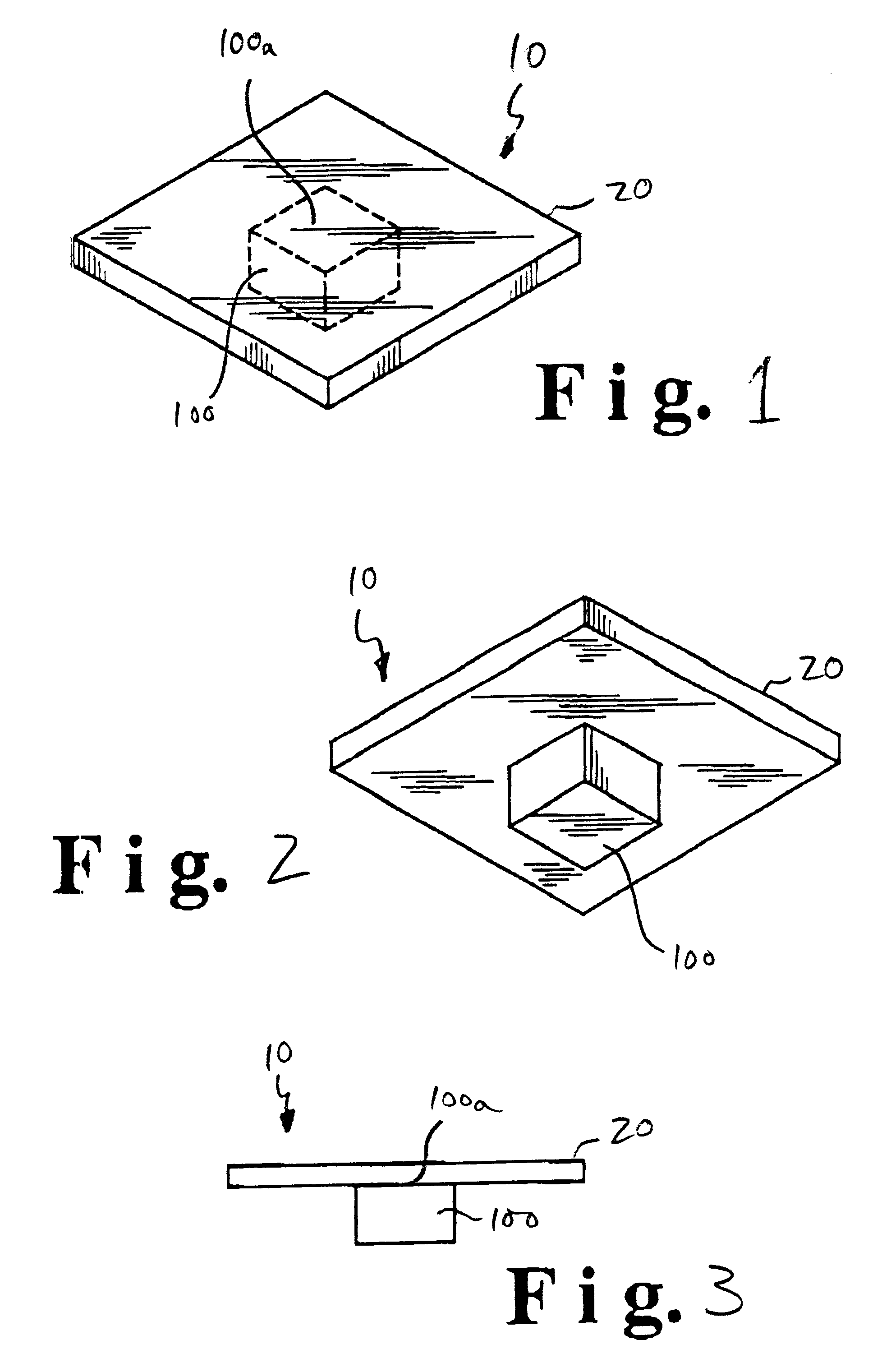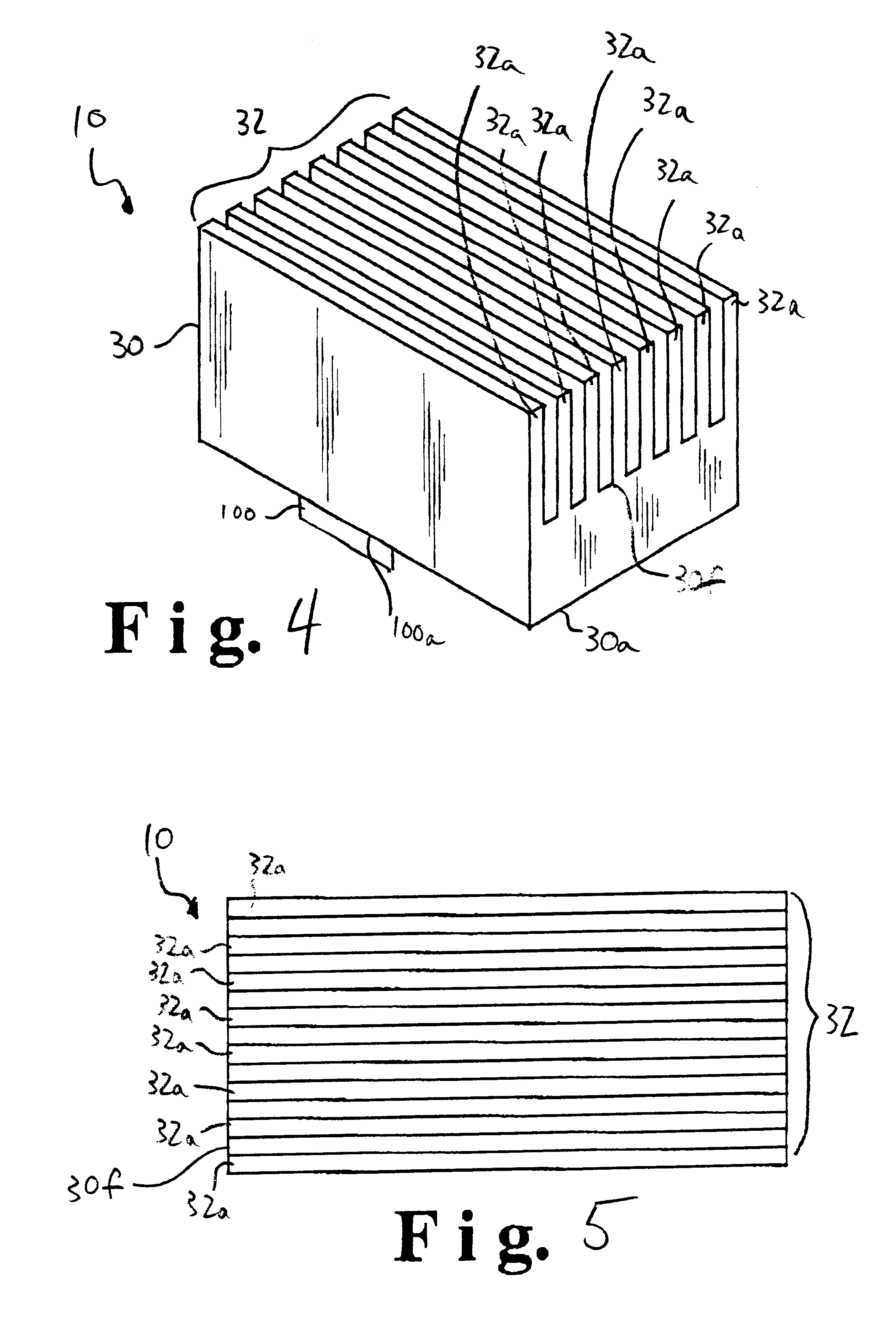Thermal management system
a technology of management system and thermal management system, applied in the direction of transportation and packaging, light and heating equipment, laminated elements, etc., can solve the problems of system failure, and affecting the performance of the system
- Summary
- Abstract
- Description
- Claims
- Application Information
AI Technical Summary
Benefits of technology
Problems solved by technology
Method used
Image
Examples
Embodiment Construction
test apparatus was prepared, consisting of a heat source having an upper surface consisting of a generally flat surface of 1 / 2".times.1 / 4" in size, arrayed in a wind tunnel. Various embodiments of thermal management systems were installed on the heat source, with temperature measurements taken at Location A, adjacent the heat source / thermal management system interface and at Location B, on the thermal management system at a position farthest from the heat source (the lower the temperature reading at Locations A and B, the better the heat dissipation characteristics of the thermal management system being tested).
Run 1--a thermal management system consisting of a copper heat sink having dimensions of 1".times.1".times.0.8" and having 8 straight fins was arrayed on the heat source. A thermal interface consisting of a 1".times.1" sheet of anisotropic flexible graphite sheet was interposed between the copper heat sink and the heat source. The testing wind speed was 1.6 meters per second ...
PUM
 Login to View More
Login to View More Abstract
Description
Claims
Application Information
 Login to View More
Login to View More - R&D
- Intellectual Property
- Life Sciences
- Materials
- Tech Scout
- Unparalleled Data Quality
- Higher Quality Content
- 60% Fewer Hallucinations
Browse by: Latest US Patents, China's latest patents, Technical Efficacy Thesaurus, Application Domain, Technology Topic, Popular Technical Reports.
© 2025 PatSnap. All rights reserved.Legal|Privacy policy|Modern Slavery Act Transparency Statement|Sitemap|About US| Contact US: help@patsnap.com



